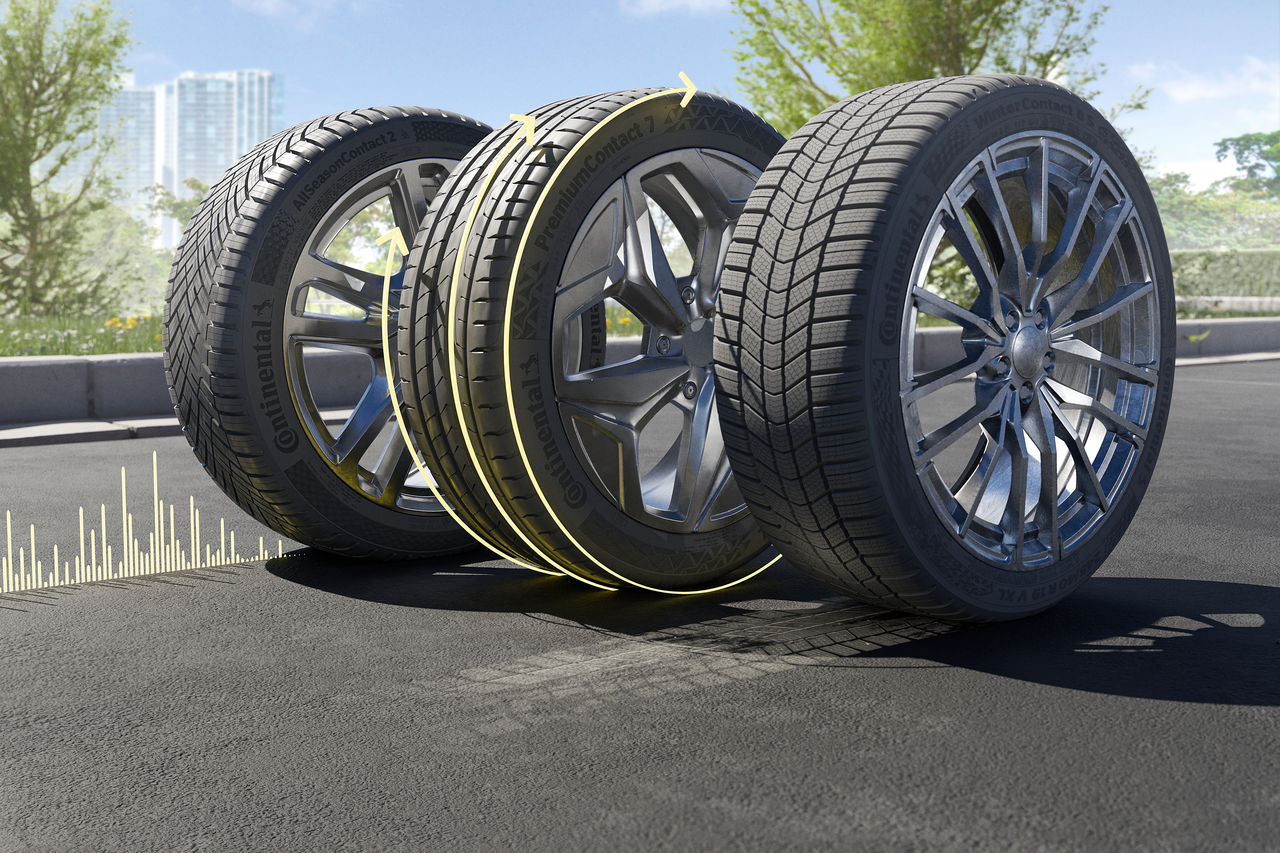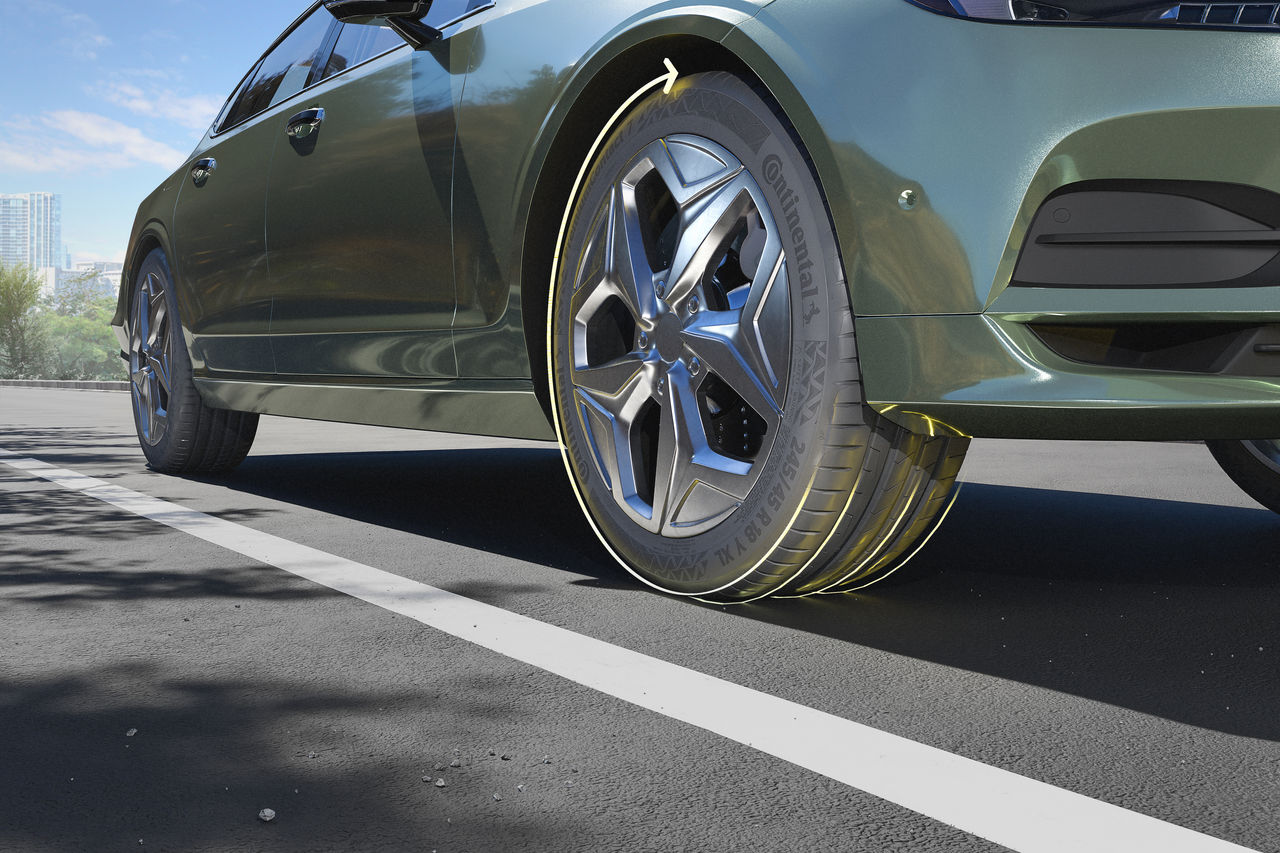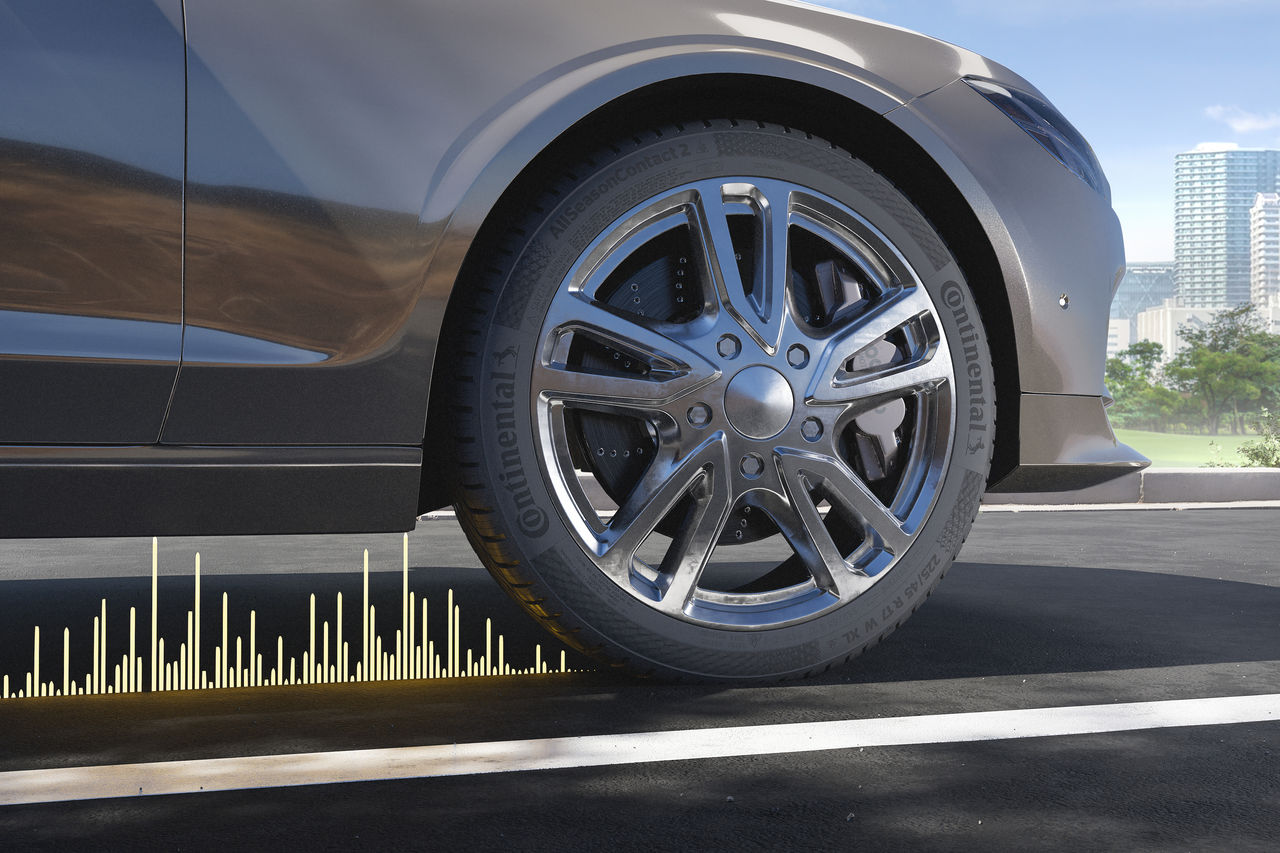
Visit Continental Tires in your country for local vehicle fitment
Tire-related Use Phase Emissions

When we think of vehicle emissions, we usually picture exhaust – or tailpipe – emissions like carbon dioxide and nitrogen oxides. Low rolling resistance tires help lowe these emissions by reducing a vehicle’s energy consumption. However, emissions produced while a vehicle is in use – the so-called use phase – also include non-exhaust emissions such as tire and road wear particles or tire noise. The optimal combination of tire noise, rolling resistance and grip is essential for safety and comfort on the road.
Continental tires deliver outstanding performance, energy efficiency and durability. They also meet the highest safety standards throughout their entire lifespan. Through innovative technologies, we are continuously minimizing the ecological footprint of our tires. We are improving their lifespan, reducing wear and lowering both rolling resistance and tire noise. Our goal: We are committed to making tires that generate fewer emissions and offer outstanding durability.
Road traffic emissions such as carbon dioxide (CO2), nitrogen oxides (NOx) and particulate matter are mainly caused by the combustion of fossil fuels like diesel and gasoline. Low rolling resistance tires make a vehicle more energy efficient and therefore help cut CO2 emissions.
Other emissions that occur tire-related while driving include tire noise and tire road wear particles.
Rolling resistance
Reducing rolling resistance makes a vehicle more energy efficient. Tires with low rolling resistance reduce fuel consumption and CO2 emissions in combustion-engine vehicles and increase battery range in electric vehicles.
Continental’s own calculations – confirmed by leading vehicle manufacturers – show that a 15-percent reduction in rolling resistance in a combustion-engine vehicle (under otherwise identical conditions) can save about 0.1 liters of fuel per 100 kilometers. This leads to a reduction in CO2 emissions of around 2 grams per kilometer. Applied to all kilometers driven on German roads, this could potentially save around 1 million tons of CO2 each year.
Tire noise
As a vehicle moves, tires generate sound. This includes external rolling noise and internal noise transmitted into the passenger compartment. At low speeds, engine noise dominates in combustion engines. In electric vehicles, the Acoustic Vehicle Alerting System (AVAS) generates artificial driving sounds that enhance safety for pedestrians and cyclists.
At medium speed levels, the tires are the main source of external noise, while aerodynamic sounds dominate at high speeds.
Continental’s tire technologies are designed to minimize exterior and interior noise, such as the ContiSilent technology for reducing rolling noise inside the vehicle. Less noise pollution is better for the environment and ensures a more pleasant acoustic experience for everyone on board.
Tire and road wear particles
The friction produced by a tire is essential for road safety. It is what helps a car grip to the road, enabling it to accelerate, brake and corner safely and in a controlled manner. Grip refers to how well a tire holds on to the road surface and is inevitably linked to tire abrasion. Tire wear is therefore an unavoidable yet essential part of driving.
Friction produces particles from both the tire tread and the road surface, known as tire and road wear particles. We are developing efficient technologies to reduce the amount of tire and road wear particles released. Moreover, we are working to minimize the impact of these particles on the environment.
Related topics
-
 2025/12/08Our tire supply chain is 100 percent carbon neutral by 2050 at the latest. Find out what we are doing to achieve this goal.Design & SourcingRead more
2025/12/08Our tire supply chain is 100 percent carbon neutral by 2050 at the latest. Find out what we are doing to achieve this goal.Design & SourcingRead more -
 2025/12/08In order to achieve climate-neutral production by 2040, Continental is investing in energy-, resource-efficient as well as low-emission production processes.OperationsRead more
2025/12/08In order to achieve climate-neutral production by 2040, Continental is investing in energy-, resource-efficient as well as low-emission production processes.OperationsRead more -
 2025/12/08We strongly believe that the circular economy is the future. This is why we are developing innovative methods to enable material to be recovered, recycled and re-used.Post-UseRead more
2025/12/08We strongly believe that the circular economy is the future. This is why we are developing innovative methods to enable material to be recovered, recycled and re-used.Post-UseRead more


